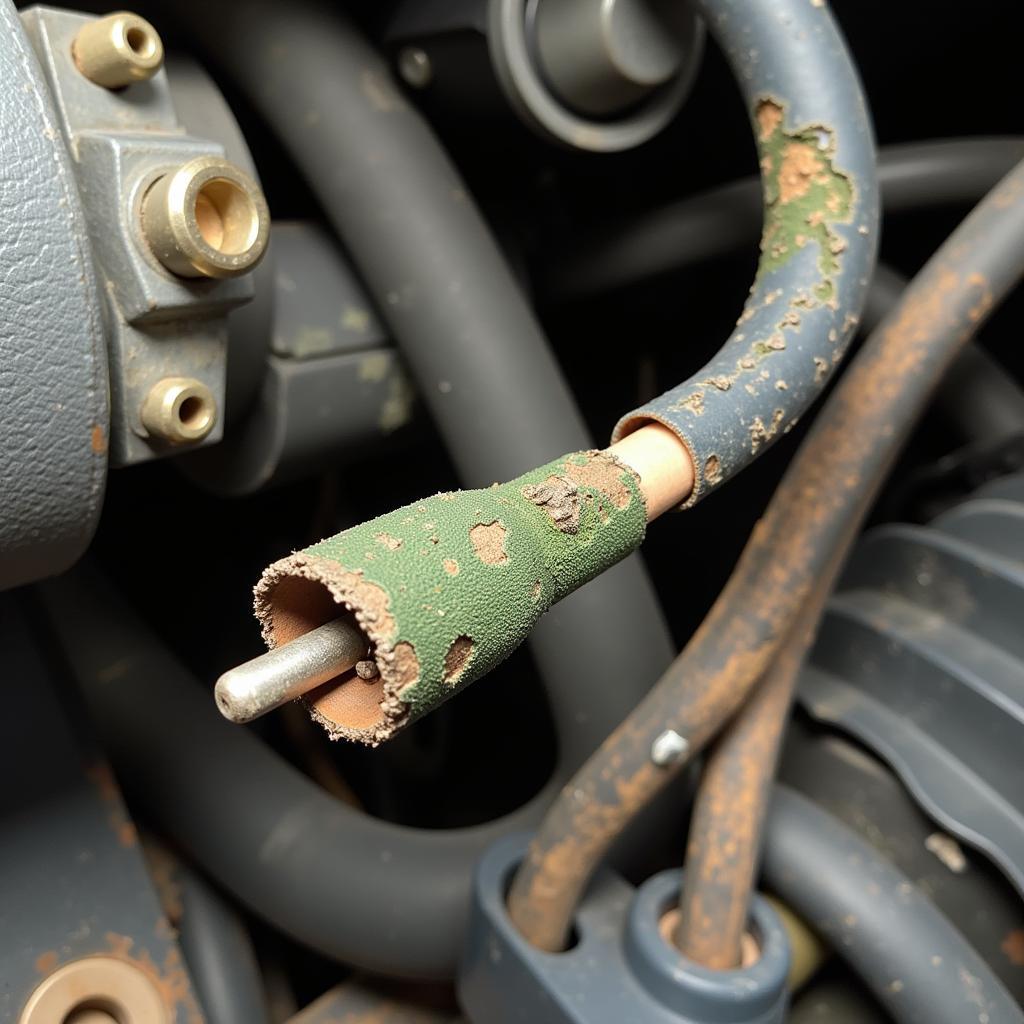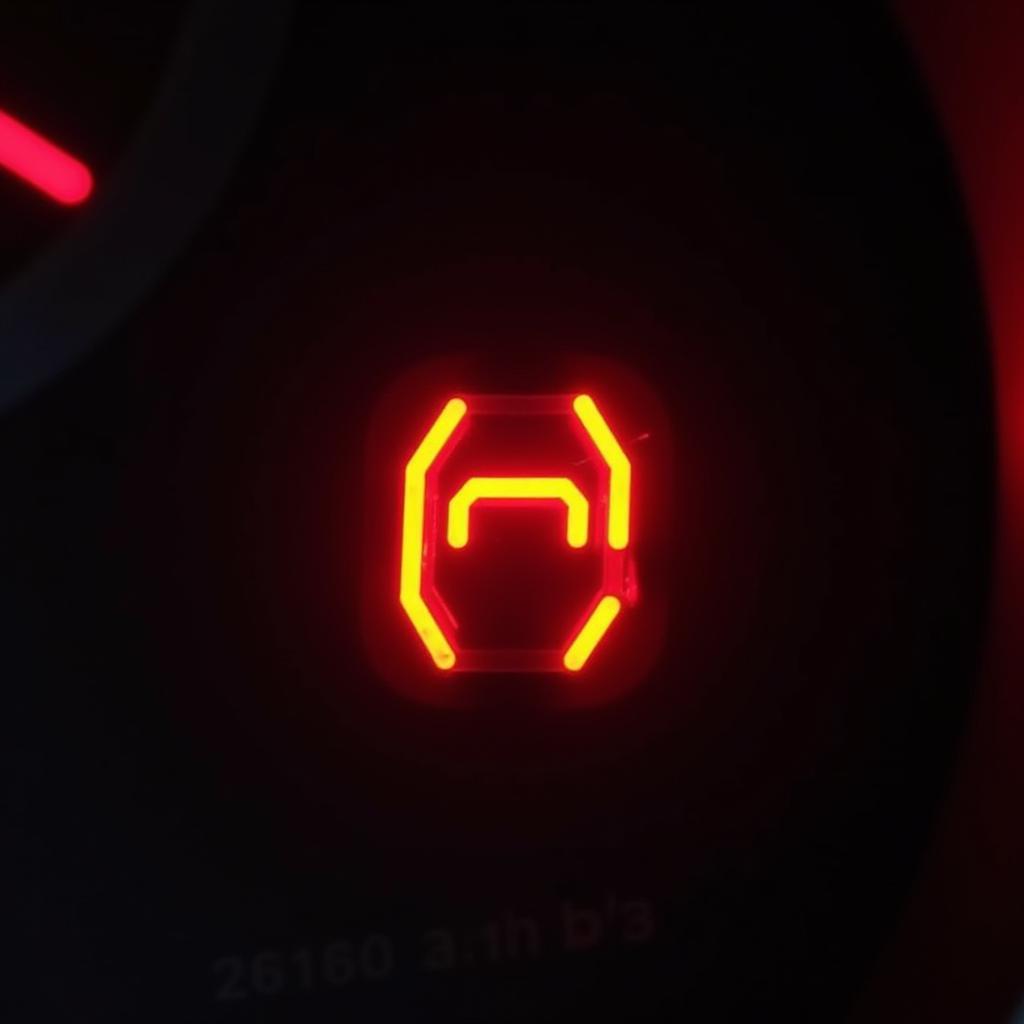A parasitic drain, also known as a “key-off” drain, can be a real headache for car owners. It’s that sneaky electrical gremlin silently draining your car battery even when the ignition is off, leaving you stranded with a dead battery in the morning. This article dives deep into the causes, symptoms, and most importantly, how to diagnose and fix a parasitic drain on your car.
Understanding the Enemy: What is a Parasitic Drain?
A parasitic drain occurs when a circuit in your vehicle continues to draw power even after the ignition is turned off and the key is removed. This continuous draw, even if small, can eventually deplete your battery, leaving you with a no-start situation. It’s like leaving a light on in your house all night – eventually, the power bill comes due.
Common Culprits: Identifying the Source of the Drain
Several components can cause a parasitic drain. Common culprits include faulty interior lights, glove box lights, trunk lights, door switches, aftermarket accessories like stereos and alarms, and even corroded wiring. Diagnosing the exact source requires a systematic approach.
Checking the Obvious: Interior and Exterior Lights
First, check all interior and exterior lights to ensure they’re turning off correctly. A faulty switch or a stuck relay can keep a light on, draining your battery over time. Don’t forget the glove box and trunk lights!
Aftermarket Accessories: A Common Source of Drains
Aftermarket accessories, especially those not professionally installed, can be a major source of parasitic drains. Faulty wiring or improper connections can lead to a constant power draw. If you’ve recently installed a new stereo, alarm, or other accessories, consider checking these first.
Corroded Wiring: A Hidden Danger
Corroded wiring can create unintended pathways for electricity, leading to parasitic drains. Inspect your wiring for any signs of corrosion, especially in areas exposed to the elements.
 Corroded Car Wiring Causing Parasitic Drain
Corroded Car Wiring Causing Parasitic Drain
Diagnosing the Drain: Tools and Techniques
Diagnosing a parasitic drain involves using a multimeter to measure the current draw with the ignition off. This allows you to pinpoint the circuit causing the problem.
Using a Multimeter: The Essential Tool
A multimeter is crucial for accurately measuring the current draw. By connecting the multimeter in series with the battery’s negative terminal, you can measure the milliamp draw with the key off.
The Fuse Box Test: Isolating the Circuit
The fuse box test is a methodical way to isolate the circuit causing the drain. By removing fuses one by one and observing the current draw on the multimeter, you can identify the faulty circuit.
Remote Diagnostics and Software Solutions: The Future of Car Repair
In today’s connected world, remote diagnostics and software solutions are becoming increasingly important in diagnosing and fixing car problems, including parasitic drains. These technologies allow expert technicians to access your vehicle’s data remotely, identify the issue, and even program or update software to resolve the problem without you having to visit a repair shop. This saves time and often provides a quicker, more efficient solution.
“Remote diagnostics are revolutionizing car repair,” says John Smith, Senior Automotive Electrical Engineer at AutoTech Solutions. “By accessing vehicle data remotely, we can quickly identify and resolve issues, often without the need for a physical inspection.”
Fixing the Drain: Reclaiming Your Battery Power
Once you’ve identified the source of the drain, fixing it can range from replacing a faulty fuse to repairing corroded wiring or uninstalling a problematic accessory.
Simple Fixes: Fuses and Relays
Sometimes, the fix is as simple as replacing a blown fuse or a faulty relay. Always replace fuses with the correct amperage rating.
More Complex Repairs: Wiring and Components
More complex repairs, like fixing corroded wiring or replacing faulty components, may require the assistance of a qualified technician.
“Don’t underestimate the complexity of car electrical systems,” warns Jane Doe, Lead Technician at AutoRepair Pro. “If you’re not comfortable working with electrical components, it’s best to seek professional help.”
Conclusion: Keeping Your Battery Alive and Well
A parasitic drain can be a frustrating problem, but by understanding its causes, using the right tools and techniques, and taking a systematic approach, you can diagnose and fix the issue, keeping your car battery healthy and your mornings hassle-free. Don’t let a parasitic drain drain your wallet and your peace of mind!
FAQ
- What is the most common cause of a parasitic drain? Often, it’s a faulty relay, interior light, or aftermarket accessory.
- How long does it take for a parasitic drain to kill a battery? This depends on the severity of the drain and the age/condition of your battery, but it could range from a few hours to a few days.
- Can a parasitic drain damage other car components? Yes, in some cases, a prolonged drain can damage other electrical components.
- Can I fix a parasitic drain myself? Simple fixes like replacing fuses are DIY-friendly, but more complex issues may require professional assistance.
- How much does it cost to fix a parasitic drain? The cost varies depending on the cause and complexity of the repair, ranging from a few dollars for a fuse to hundreds for more extensive repairs.
- How can I prevent parasitic drains? Regular car maintenance, including checking for corroded wiring and ensuring proper installation of accessories, can help prevent drains.
- What tools do I need to diagnose a parasitic drain? A multimeter is the essential tool for measuring current draw and identifying the source of the drain.

